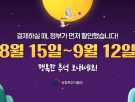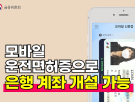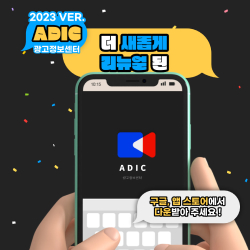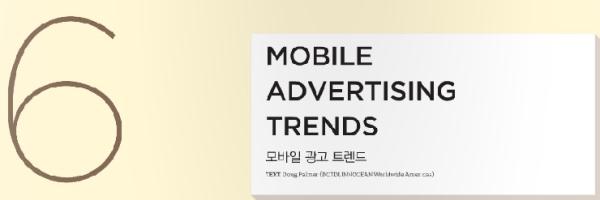
Text. Doug Palmer (DCTDI, INNOCEAN Worldwide Americas)
Doug Palmer is the Director of Creative Technology & Digital Innovation at INNOCEAN Worldwide Americas (IWA). He provides technology vision, leadership, and knowledge for the agency's brand, digital, social, and retail efforts as part of the IWA Innovations Team. Doug's data-and science-based approach to his work results in solutions that are innovative, technology-centric, and integrated, helping IWA to boost slaes and win more than its fair share of industry awards.
In today's highly-connected age, technology is an integral part of every things we do. We're always on, always connected, always aware. Nothing illustrates this fact more than our smartphones: we're constantly updating, texting, chatting, and posting on them. It never stops.
As more and more people become connected, the dramatic proliferation of smart devices, tablets, and phones is radically changing the way we consume the content, both in terms of volume and variety. For example, Americans spent 18 hours a month on their devices in 2011, but by 2014 the figure had ballooned to over 34 (Nielson, 2014). Despite this, while content creation has grown exponentially to meet the ever-growing demand for new content, the time we actually have to consume that content hasn't.
Because of that limitation, and because we're being bombarded by more and more data that we need to sort through, consumers are becoming less receptive to ads. This especially applies to mobile consumers. Thus, while mobile advertising continues to provide great benefits to both brands and advertisers (with as much as a 45% lift in intent being reported when ads are engaged with), consumers don't like receiving ads in exchange for services. In fact, only 13% of them say that they're willing to do so (Nielson, 2014).
Given this situation, we need to ask ourselves what advertisers can do to make a better value proposition to mobile consumers. How can we engage with them in a more meaningful way, providing more value in our messaging and in the experiences we offer? Click-through rates alone can't provide a complete picture, and conversion rates can be near zero in the context of traditional mobile advertising. This battle for relevancy and engagement is one that the tired-and-true, traditional ad philosophy is losing. A better way of engaging users in topics that are relevant to both advertisers and consumers is long overdue.
Native Advertising
What is "native"?
The term "native advertising" refers to a type of paid media in which both the form and the function of an ad follow the natural user experience within which it is placed. By matching the visual design of the experience they live within, and behaving consistently with the native user experience, they function just like natural content. The only difference is in their messaging. Top-flight native ads are not only relevant in terms of subject matter; they are also on point and on topic, are aware of adjacent content and extremely well-targeted, and play to the strengths and demographics of the community that uses the platform or app on which they're served as fully as possible.
Many leading publishers and brands have created entire "content studios" to create content. Examples include media brands such as Forbes. The New York Times, The Wall Street Journal, Time, and The Guardian, as well as new media companies like Buzzfeed, Thoght Catalog, Slate and many others.
Why Native?
In short, native ads work better. People see them. Research carried out by Yahoo and Nielson tell us that 25% more consumers looked at in-feed, native ad placements (the most common format) than at standard banners. In addition, native ads tend to be thought of as editorial content.
Consumers looked at native ads 2% more than editorial content, and spent the same number of seconds viewing them. As a result, native ads drive branding goals and purchasing intentions much more effectively than the alternatives, with 97% of mobile media buyers reporting that native ads were either very or somewhat effective in achieving branding goals. They also registered an 18% higher lift in terms of purchasing intentions that banner ads did. Proprietary studies commissioned by Yahoo, Nielson, and others in 2014 show that native ads received more focus, more intentions, more time spent, more engagement, and more lift that those offered by traditional mobile media.
Now that we've seen some great examples of what's trending in terms of native and programmatic, what's next in the battle for relevancy and engagement on mobile? Here are a few examples of what you might see in the near future.
Programmatic Native
Google has just announced the advent of "programmatic native" advertising. This is achieved by allowing its publishers customers to show native ad inventories in their mobile apps to buyers on the Double Click Ad Exchange. This, in turn, has the potential to bring a slew of now advertising dollars to native ads-especially from big brands, whose native programmatic buys have to this point been largely relegated to Facebook, Twitter, and a few ad tech companies. Although native still constitutes a small percentage of overall digital media spends ($3.4BB according to eMarketer), it's growing exponentially. As these technologies combine even more, and placement becomes more widespread and liquid, we can expect this area to explode.
At first, Google's programmatic monetization is being restricted to mobile app ads, which is where the company sees its greatest opportunity. Native web ads will follow early in 2016. In addition, the IAB has developed its latest standard for RTB (OpenRTB 2.3). This will formalize the industry's real-time native programmatic auctioning process, providing scale, efficiency, and liquidity in the RTB market as its implementation by ad tech companies becomes ever more widespread.
Appticipation
"Appticipation" is a term that describes a complex combination of user profiles, contextual usage, geolocations, and improved user experiences to provide relevant content and functionality within mobile apps, as or just before a user needs it. Its goal is to reduce friction, enhance the users' experiences, and increase their engagement. For example, you could deliver a frictionless user experience by surfacing relevant app features and content automatically, as users transitions from the outside to the inside of your dealership.
This past year has focused on improving most contextual technologies, and as we moved forward, we will start to see it all pay off. I think you'll see this practice reflected first in retail apps, which are already only a small step away from automating these dynamic experiences. Then they'll quickly spread to the programmatic native and RTB space.
Having the ability to understand a user's precise location will make a targeted experience, such as a "Store Mode", a reality. this means that apps and native ads will begin to deliver their messages based on the behavior of the user, not the other way around. Additionally, with the introduction and prevalence of beacons and other hyper location tech, we will start to see "appticipation" being integrated in a more sophisticated manner.
Contextually Native Ad Experiences
Now let's take this all to the next logical level. If we have access to all this data about a consumer, ready to leverage it within the device they are holding, and surrounded by our dealership or store location, we have all the ingredients needed to begin building the ultimate user experience-both in app, and in ad. Ad experiences will become the new channel through which advertisers engage consumers, since the online ad tech ecosystem will combine good user locations with enhanced user data availability-especially on mobile. With this combination of hyper-local context, expanded programmatic and native capabilities, and an exact user or audience segment, we'll see a dramatic increase in the relevance of mobile advertising-which will prompt even more engagement. When this happens, ad tech will finally be able to truly focus on the ad user experience.
Micro-Moments
According to Google, micro-moments are the now battleground for brands. These intentionality-driven moments when consumers' preferences are shaped and decision are made are a special opportunity for advertisers. Every day, audiences fill their days with hundreds, if not thousands, of these micro moments. As consumers spread their attention across more and more screens and channels, these moments can happen almost anywhere and anytime.
Search and videos are the low-hanging fruit here, but marketers will increasingly be able to connect the dots across all these disparate micro-moments as consumers move through the customer journey. the contexture, programmatic native advertising experiences we just spoke about are the individual opportunities to engage consumers, and a proper combination of a "micro-moments strategy" and in-depth insights can weave them together into a cohesive, intelligent, highly-valuable exchange between brand and consumer, Brands can use programmatic native, with contextual data and geolocation, to assemble a consumer's micro-moments in just the right way to see a detailed blueprint of consumer intent. Then they'll be able to act on it with the exact right message or CTA at the exact right time, driving not only engagement, but ultimately conversion.

The Future
Looking farther forward, what can we envision down the road in terms of mobile advertising?
Hardware SensorsThe anticipated success of "appticipatory", contextually relevant, programmatic native ad experiences means that new ad tech platforms will emerge, maybe built by Google, maybe by others. These will demonstrate mobile devices' full capabilities - down to the hardware sensor level - in terms of both ad tech and ad placements. When this happens, native ads will become as creative and rich as native apps.
LISNRLISNR is a new technology that's poised to replace beacons, bluetooth, and many other communications technologies. Utilizing a high-frequency "smart tone" that can be detected by mobile devices through any speaker, LISNR creates a secure, data-over-audio communication layer. Completely inaudible to humans, mobile campaigns with LISNR can enhance the customer experience, shopper marketing efforts, and retail activations in an almost magical way. These enhancements to and advances in hyper-local technology will quickly find their way into ad tech-space. Because it's much more flexible, reliable, and dynamic than current hyper-location and communication technology, it can provide a much more seamless and enhanced experience, both in app and in ad. Since LISNR will be embedded in many apps, exposing its capabilities to programmatic native will only be a matter of time.
Adometry&Drawbrid.ge
Adometry is a cross-channel attribution solution from Google that solves the problem of integrating, measuring, and optimizing marketing data across all channels, both online and offline. It provides a new level of visibility into the overall customer journey by using algorithms that process both first-and third- party data, giving it the capacity to report true lift across platforms. Drawvrid.ge is another Google service that provides a "connected consumer graph" technology that enables real-time, cross-device tracking and ad serving. When this power of cross-device attribution and network graphing is added to the speed, flexibility, and relevance of "appticipatory", contextually native, programmatic ad tech, true hyper-personalization becomes possible.
In spite of problems facing mobile advertisers due to wary users and skeptical consumers, the future is actually quite bright for mobile marketers. When high-quality, native and programmatic advertising is combined with growing contextual and anticipatory technologies that are in turn married to constantly improving user and ad experiences and layered with strong micro-moments and emerging technology strategy, advertisers have a richer-than-ever landscape in which to engage with consumers around their brand stories, allowing them to provide real-world utility to consumers within the mobile ad space. In the context of today's "always on, always connected, always aware" mobile society, mobile marketers need every tool they can get their hands on, both to remain relevant and to ensure that they can capture their consumers' attention.
Native Case Studies
Here are some examples of excellent native ad executions.
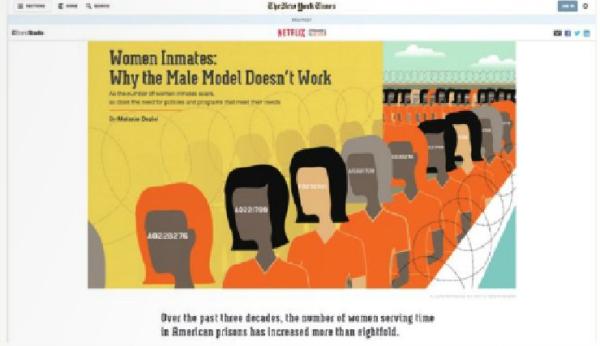
Netflix/NYT/Wired-Orange is the New Black
One of the first examples of how to do native right was this subtle piece created by Netflix and placed within the New York Times site. It was actually an in-depth article about women's prisons, and was so well-done that it could easily have been read as an authentic Times story. The success of this piece came directly from Netflix deciding not to shove its brand down its reader's throats. Instead, the company opted to embrace the community and the spirit of the Time's readership by providing them with a piece that was both thoughtful and relevant, without breaking the user's experience.
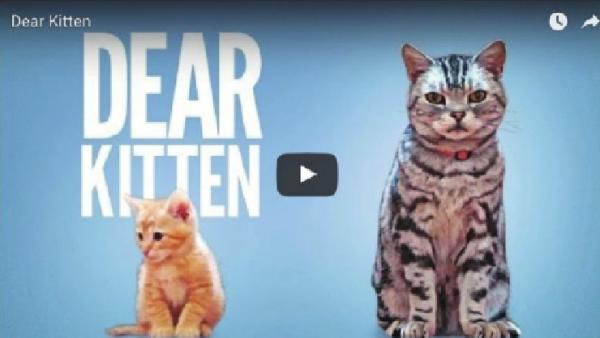
Purina/Buzzfeed
Since videos featuring cats consistently blow up the internet, it made perfect sense for Purina to "pounce" on that trend. Purina's "Dear Kitten" video racked up more than 5,000,000 views in just four days. It's fun, it's cute, it's on brand, and it fits right in with all the other fun, cute, cat videos on YouTube. By playing along with a massive internet trend, Purina was able to communicate a quality brand message while also remaining relevant to users in a way that didn't feel invasive.
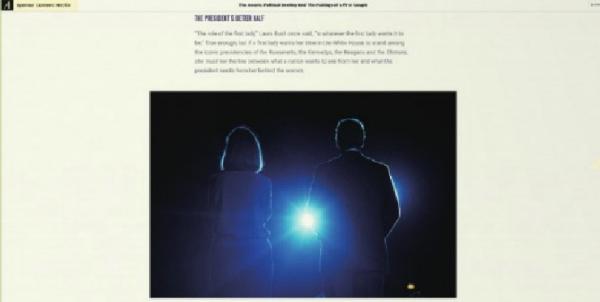
House of Cards/The Atlantic
For House of Cards Season Three, Netflix created a brilliant piece about American presidential couples. They include photos of America's first couples kissing, of the Obamas looking happy, along with interesting infographics, engaging videos, and even details about scandals? anything, in fact, that you could possibly want to know about country's first couples. By utilizing outstanding production values and seizing on a smart strategy of emulating the type of content that people were already consuming, Netflix achieved both high levels of engagement and community relevance.
Programmatic Advertising
What is "Programmatic"?
The term "Programmatic advertising" refers to a type of ad buy that typically uses digital software to select, bid on, and purchase ad placement. Programmatic software has the potential to make the entire ad buying industry cheaper and more efficient through the use of automation. Programmatic also sells guaranteed placements and impressions with specific publishers and sites.
Why Programmatic?
Programmatic Advertising technology delivers hyper-personalization and hyper-contextualization, which results in the ultimate in consumer ad experiences by promising absolute relevance and infinite engagement. Programmatic is definitely the future of ad buying, especially on mobile, because it is so personal. Programmatic will really start to shine as it develops further within the mobile device space.
Programmatic case studies
Here is a great examples of an excellent programmatic ad execution.
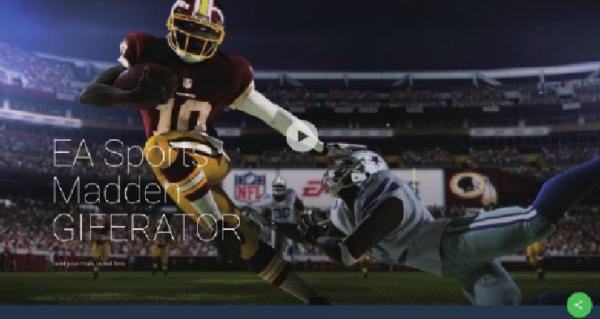
EA/Madden
The GIFs were delivered by means of real-time display ads across sports web sites and apps. By using such dynamic creativity, EA was able to activate "on-the-fly" mobiles ads featuring different combinations of copy, images, and backgrounds, all of which reflected what was happening in the game at any specific moment. The ads then took fans to a collection of shareable GIFs with 100,000-plus interchangeable creative combinations that they could customize in seconds and share with their friends. EA also ensured that fans saw relevant GIF highlights of their favorite teams through custom affinity targeting.
What's Next?





















